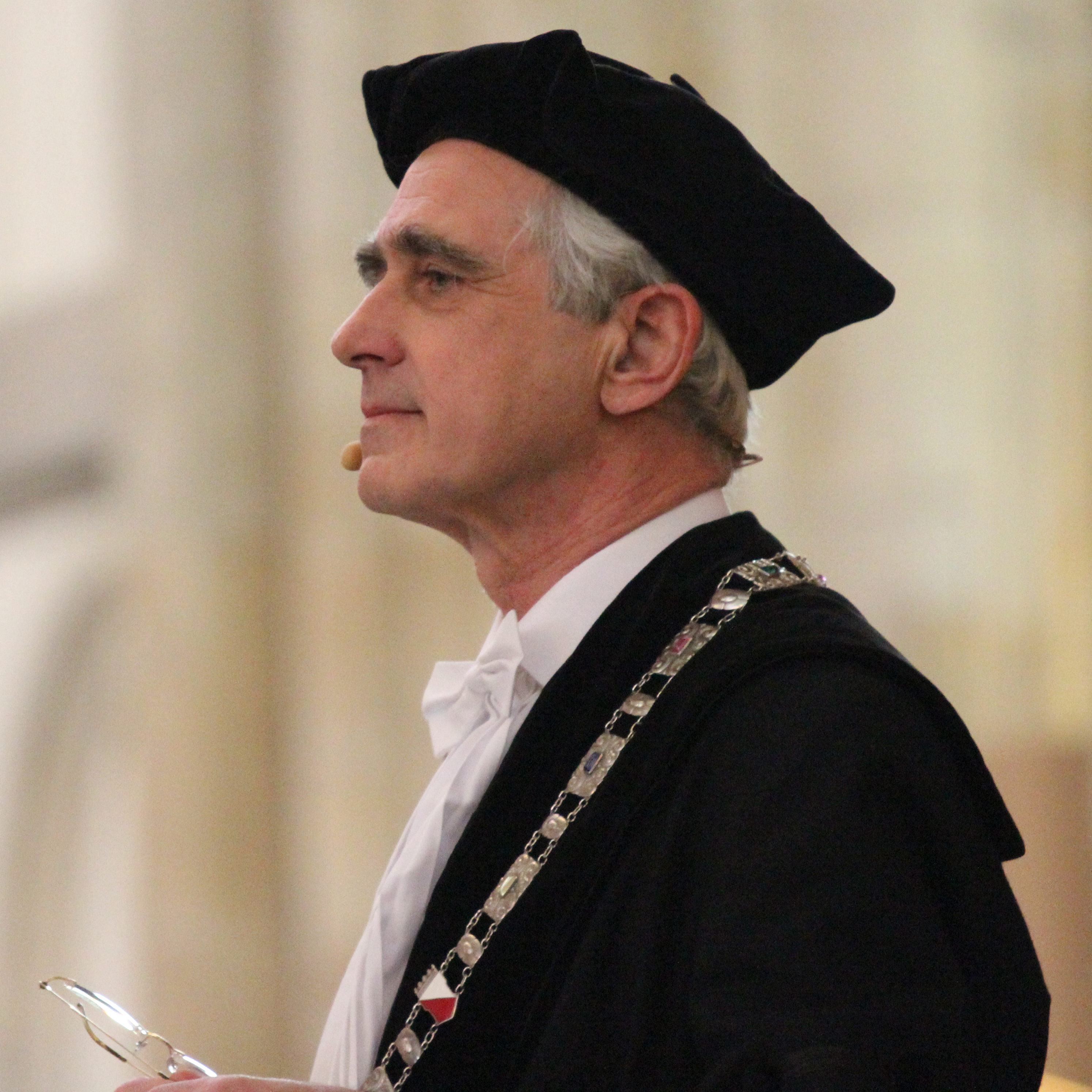‘Everyone who chooses science, does so because they’re following their passion’

“What I’ve been missing more and more at the university, is the attention to beauty,” professor Beatrice de Graaf wrote in a blog for newspaper NRC last January. “I didn’t choose science to be judged on fundraising, numbers of publications, or for how little or how much students complain about me. Why can’t we cut back on the sourness, the bitterness, and the judging in terms of usefulness, and commit ourselves to beauty in science?”
Beatrice de Graaf’s call resonated with Bert van der Zwaan. As guest editor-in-chief of DUB, he wanted to publish an article on the beauty of science.
“We’re always rushing ourselves for joyless necessity,” De Graaf explains when she has twenty free minutes in between appointments. “Sometimes, you haven’t even received the first grant but you already have to start filling out the paperwork for the second. So I ask myself sometimes: what am I doing this for?” For you’ll only see beauty “when you stand still, and stop working in terms of production and quantity.” And pure happiness for her, she says, can be found in the beauty of things. In fact, it was her main motivation when she chose a career in academia. “I think everyone who chooses science, does so because they’re following their passion.”
'Freedom leads to more beauty'
Ralph Meulenbroeks, who is both assistant professor in math and physics but is also a musician, recognizes himself in De Graaf’s words. “The workload at the university is constantly increasing. I think everyone who works here will acknowledge that. Science has become such an enormous rat race, but I’m convinced people can produce more beautiful things if they’re given the freedom to follow their own intrinsic values and motivation. I think things become ugly when you force people into set structures. Of course a university with so many people needs some form of bureaucracy, and money has to be accounted for, roughly speaking, but the administration of hours worked is, to me, one of the ugliest things of all this. It’s bizarre to me that I’m talking about beauty now, and then I’ll later have to account for the time this talk took me.”
Meulenbroeks would like the UU to follow Google’s example. “Every full time employee had one day a week to spend on things that were completely unrelated to their regular jobs.” It turned out that all good ideas were developed during those hours. “I’d even settle for having 10 percent of your time to be spent freely here at the university. I’ve noticed that people don’t have enough time to read and think.”
'Creativity isn’t going to hit you when you’re sitting behind your computer dealing with your emails'
It’s a sign of poverty that Meulenbroeks is asking for 10 percent, says Marc van Mil, educational innovator at biomedical sciences. He was named Teacher of the Year 2017 by the Dutch National Students’ Association (ISO). “You’d think that a scientist would be able to spend 80 percent of his time thinking, dreaming, reading and discussing. But that kind of employer’s trust is no longer evident, because there are so many interests to think of. If anything goes wrong, it’s not just the scientist who’s blamed, but the entire organization. But if you regulate everything, maybe nothing will ever go wrong - but nothing special will happen either. When I look back at the things I created that became successful, I notice they’re all things that started as ideas I had while taking a shower. Creativity thrives on freedom, unexpected things and new impulses. You’re not going to get those sitting behind your computer.”
Professor of Labour Economics Joop Schippers agrees with the idea that beauty comes from the unexpected. “Beauty is in the surprise of a collaboration or a meeting. Having a colleague come up with something different than you had thought of yourself. I experience this often when working with people from another discipline. But it’s possibly related to the fact that my own discipline is highly oriented at scoring. The more the focus is on scoring, the less room you have for beauty. To put it in terms of sports: if you’re in a soccer game and you’ve formulated the goal to score three goals, then it doesn’t matter if those goals are beautiful or ugly ones. But if it’s not about the three points, then maybe you can let someone else score a goal once as well. And maybe it’ll be more beautiful than if you would’ve done it yourself.”
'Students can’t sit and relax and just enjoy anymore'
Students are also often too busy to see the beauty of science, the four scientists state. De Graaf: “I’m seeing so much stress in them. They can’t just sit and relax with me and enjoy the history.” The professor says she thinks it could be because students can’t afford any delays in their studies anymore. They are, to keep using Schippers’ soccer terms, aimed at scoring enough goals to get their diplomas. The academic education is put in a pressure cooker, while beauty could be created from slowly simmering. Meulenbroeks: “In class, it sometimes feels as though I have to pump them full of the course material in record time. The word alone - pumping! - is horrid.” De Graaf: “Someone who responded to my column said you experience beauty when you reach the top of a mountain after spending ages climbing it, and thinking: Wow! But you’ll only have that ‘wow’ feeling after and because you climbed the mountain.”
Schippers says it’s not just because students don’t have - or take - enough time to discover their paths, but it’s also caused by the way education is currently shaped. “We’ve adopted a system in which information is offered in bite-sized bits. As a result, you’ll miss that journey of exploration.” Van Mil also thinks classes focus too much on ready-made answers, while scientific beauty, for him, is more about asking questions. “I love the realization that every question can lead to new questions, and you’re constantly realizing how much you don’t know. I try to awaken that same sense in students, but it’s undermined by our current educational system. It’s hard to test students on questions like ‘Which questions does this prompt for you?’ Because how are you going go assess one question over another? It takes courage to invite students to research and ask questions. Because maybe you’ll get to a point where you as a teacher have to say: ‘I don’t know.’ That means making yourself very vulnerable.”
'Beauty is a risk factor'
It’s a familiar image to Laura Cromzigt, pre-master student of Mathematics. “At the university it seems like the questions for students are already there, as obvious goals, and all you have to do is learn the right methods to use in order to reach those goals. The efficiency you employ to reach those goals is the thing you’re assessed by, the thing that influences your grades and ECTs. It’s impossible to grade questions that deviate from this, so it’s bad for your progress. Getting lost in the big world means delays, and many students can’t afford to get delayed. Beauty is a risk factor.”
'Beauty is more than freedom'
You can’t only find beauty in freedom, conversations show. Beauty can be a well-made formula written down on a chalkboard, the passion of a student, or the new perspectives others give us sometimes. Five UU people tell us about what they think is beautiful.
 Motivation for this article
Motivation for this articleBert van der Zwaan: I was triggered by Beatrice de Graaf’s call in NRC Handelsblad about the beauty of sciences. The science that overlooks the issues of the day. This article talks about the beauty of collaboration, and I endorse that completely. If you work together, 1 and 1 often makes 3. Beauty can also be found in extraordinary insights, such as Darwin’s theory of evolution.
Translation: Indra Spronk